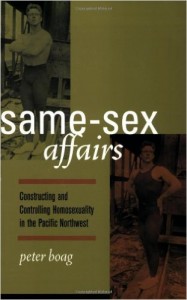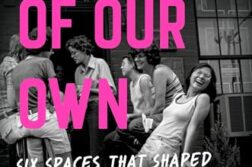 Same-Sex Affairs: Constructing and Controlling
Same-Sex Affairs: Constructing and Controlling
Homosexuality in the Pacific Northwest
by Peter Boag
University of California Press
335 pages, $60. (paper $24.95)
WHETHER FOUND in the alleys of Seattle’s Skid Row, the lumber camps of the Cascade Mountains, or the locker rooms of the Portland YMCA, homosexual men were on the move in the turn-of-the-century Pacific Northwest. Peter Boag surprises modern readers with his richly textured account of the region’s thriving homosexual communities of nearly a century ago. Who knew? But Boag does more than surprise: he tells us precisely who knew—as well as how people came to know what homosexuality was. It was a knowledge that would have significant consequences for the men of the region.
Same-Sex Affairs begins with an investigation of sexual practices in the all-male worlds of the region’s mining communities, logging camps, and hobo travelers.






